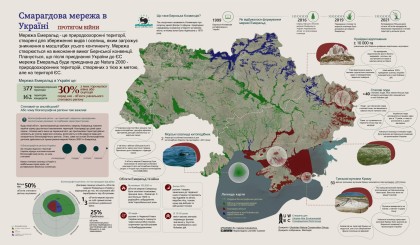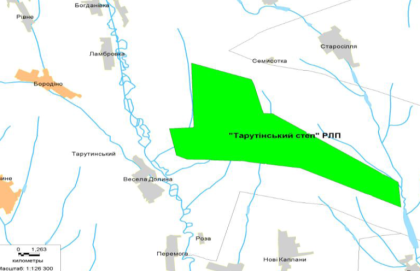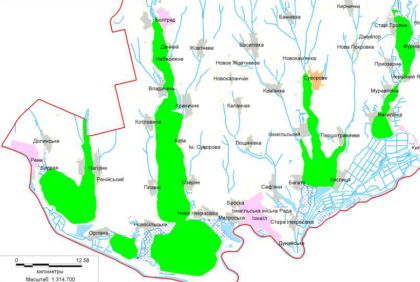Emerald Network of Europe – An Ecological Nature Conservation System
The Emerald Network of Europe (Emerald Network) is an international ecological network that unites territories of special conservation importance (ASCIs). Its main goal is to preserve natural ecosystems, including fauna, flora, and their habitats. The initiative to create this network was launched under the Bern Convention of 1979, which also coordinates its development.
The main principles of the Emerald Network are similar to those of the European Natura 2000 program, but its scope extends beyond the European Union. This contributes to a unified approach to the conservation of natural habitats across Europe.
Territories included in the Emerald Network receive the status of Emerald Sites. These are areas where rare or endangered plant and animal species live, as well as natural habitats that are subject to protection under the Bern Convention. To obtain this status, a territory must meet specific international criteria. The importance of these natural zones has been confirmed by the governments of 49 countries and the European Union, which have signed the convention.
Ukraine has identified 377 protected sites. Among the important natural areas in the Danube region, the following stand out:
Danube Biosphere Reserve
Tarutynskyi Steppe
Danube Lakes System
Sasyk Lagoon
The Emerald Network plays a key role in preserving unique ecosystems, maintaining biodiversity, and ensuring the sustainable development of protected natural areas. It is an important tool for international cooperation in ecology and contributes to the conservation of natural treasures for future generations.
Tarutynskyi Steppe
Tarutynskyi Steppe is one of the largest preserved fragments of the steppe ecosystem in Ukraine, which is part of the Nature Reserve Fund of Odesa Oblast. It is a landscape reserve of local significance, located in Tarutynskyi District within the Veselodolynska Rural Council. The total area of the reserve is 5,200 hectares, of which 4,800 hectares are agricultural lands, while 400 hectares are forests and forested areas.
Due to its significant area and the need for effective management, the initial plan was to create the Tarutynskyi Steppe Regional Landscape Park. On September 3, 2008 (decision No. 94-3/V), the Veselodolynska Rural Council approved its establishment, but in 2011, the decision was changed in favor of creating a landscape reserve. The official status of Tarutynskyi Steppe Landscape Reserve was confirmed by the Odesa Regional Council on April 26, 2012 (decision No. 445-VI), with the agreement of local and regional authorities, as well as the State Environmental Protection Administration.
The main natural value of the reserve lies in the preservation of virgin and secondary mixed-grass feather grass and feather grass-fescue steppes. Dominant species include Stipa capillata, Stipa lessingiana, Festuca, and Poa. The territory is an important biodiversity hotspot: about 40 animal species listed in the Red Book of Ukraine inhabit the reserve. Particularly significant is the preservation of steppe birds and the steppe mouse (southern subspecies) (Mus spicilegus), whose population here is one of the last remaining in Ukraine.
In November 2016, Tarutynskyi Steppe was included in the Emerald Network of Europe with the support of the Bern Convention Secretariat. This event attracted significant public attention, especially after the illegal plowing of part of the steppe in the autumn of that year, which sparked widespread resonance in the media of EU countries.
Danube Lakes System
The Ukrainian Danube Lakes are a group of water bodies located on the left bank of the Kiliya branch of the Danube River, stretching from the mouth of the Prut River to the Black Sea coast. The largest lakes in this region include:
Kagul
Yalpug and Kugurluy
Safian
Katlabuh
Kitai
The total water surface area of these lakes reaches 50,000 hectares.
All the lakes in the system are naturally or artificially connected to the Danube River through man-made canals equipped with hydrotechnical structures that regulate water exchange and allow fish migration. Several steppe rivers flow into the lakes, but they are low in water volume.
The lakes extend from north to south, bordering the Danube floodplain. Their western and eastern shores are mostly steep and clay-based, while their northern and southern shores are low-lying and, except for Lake Yalpug, are formed by alluvial deposits from the Danube floodplain.







